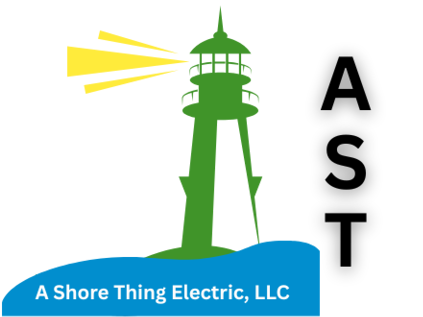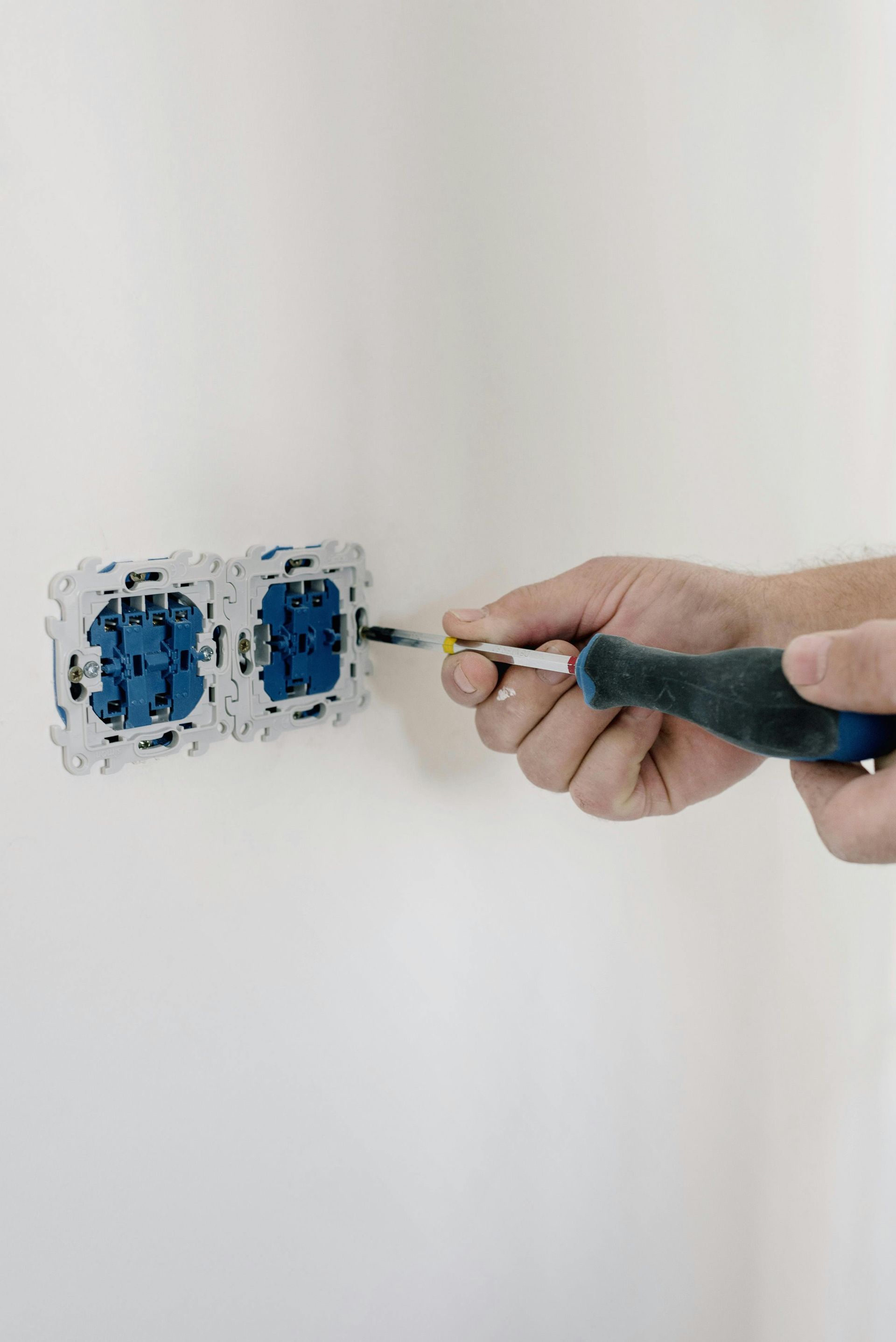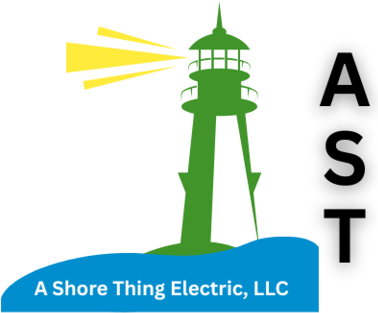Surge Protection 101: Keep Your Howell Home Electronics Safe
Power surges strike without warning, potentially destroying thousands of dollars' worth of electronics in seconds. For Howell homeowners, understanding surge protection isn't just about protecting individual devices; it's about safeguarding your entire home's electrical ecosystem. From smartphones and laptops to HVAC systems and smart home devices, every electronic component in your home faces the constant threat of voltage spikes.
Modern homes rely heavily on sophisticated electronics that are increasingly sensitive to power fluctuations. A single lightning strike or utility grid issue can send destructive voltage surges through your home's electrical system, leaving you with damaged appliances and costly repairs. The good news is that proper surge protection strategies can effectively shield your valuable electronics from these damaging power events.
This comprehensive guide will walk you through everything you need to know about protecting your Howell home from power surges, from understanding the basics to implementing a complete protection strategy that keeps your electronics safe year-round.
Key Takeaways
Before diving into the details, here are the essential points every Howell homeowner should understand about surge protection:
- Whole-house surge protection provides the most comprehensive defense against power surges, protecting all electronics connected to your home's electrical system
- Point-of-use surge protectors complement whole-house systems by offering additional protection for sensitive electronics like computers and entertainment systems
- Professional installation ensures proper grounding and code compliance for maximum protection effectiveness and safety
- Not all surge protectors are created equal - look for devices with appropriate joule ratings and fast response times for your specific needs
- Regular maintenance and inspection of surge protection devices helps ensure they continue providing reliable protection over time
- Power surges come from multiple sources, including lightning, utility grid issues, and internal electrical problems within your home
Understanding Power Surges and Their Sources
Power surges occur when electrical voltage exceeds the normal flow of electricity through your home's circuits. While your home's electrical system is designed to deliver a steady 120 volts to standard outlets, surges can spike voltage levels to thousands of volts in milliseconds. These sudden increases in electrical pressure can overwhelm the delicate circuits in modern electronics, causing immediate damage or gradual degradation that shortens device lifespans.
External surges are the most dramatic threat to home electronics. Lightning strikes, whether direct or nearby, can introduce massive voltage spikes into your electrical system. Even lightning that strikes several miles away can create surges that travel through power lines and enter your home. Utility grid switching and equipment failures also create external surges when power companies switch between different power sources or experience equipment malfunctions.
Internal surges, though typically smaller, occur more frequently and can be equally damaging over time. Large appliances like air conditioners, refrigerators, and washing machines create surges when their motors turn on and off. These appliances draw significant power when starting up, causing temporary voltage fluctuations throughout your home's electrical system. While individual internal surges may seem minor, their cumulative effect can gradually damage sensitive electronics.
The vulnerability of modern electronics has increased dramatically as devices have become more sophisticated. Today's electronics use smaller, more delicate circuits that operate at lower voltages than older equipment. Smart TVs, computers, gaming systems, and smart home devices contain microprocessors that can be damaged by voltage fluctuations that wouldn't have affected simpler electronics from decades past.
Types of Surge Protection Systems
Understanding the different types of surge protection available helps homeowners make informed decisions about protecting their electronics. Each type offers distinct advantages and works best in specific situations, with the most effective protection strategies often combining multiple approaches.
Whole-house surge protection systems are installed at your home's main electrical panel, providing comprehensive protection for all circuits throughout your property. These systems intercept surges before they can spread through your home's wiring, offering the first line of defense against external surges from lightning and utility issues. Whole-house systems typically handle larger surge events that could overwhelm smaller devices, making them essential for comprehensive protection.
The installation process for whole-house surge protection requires a qualified electrician who can properly connect the device to your electrical panel and ensure proper grounding. Professional surge protector installation in Howell ensures compliance with local electrical codes and maximizes protection effectiveness. These systems typically feature visual indicators that show when they're functioning properly and when they need replacement.
Point-of-use surge protectors plug directly into outlets, providing additional protection for specific devices or groups of electronics. These devices work particularly well for sensitive equipment like computers, entertainment centers, and home office setups. Advanced point-of-use protectors offer features like individual outlet switching, USB charging ports, and EMI/RFI filtering that improves signal quality for audio and video equipment.
Service-entrance surge protectors are installed at the point where electrical service enters your property, typically at the meter or before the main panel. These devices provide the earliest possible intervention against external surges and work in conjunction with whole-house systems for maximum protection. Utility companies sometimes offer service entrance protection as part of their service packages, making this an economical option for basic surge protection.
Choosing the Right Surge Protection for Your Home
Selecting appropriate surge protection requires evaluating your home's specific needs, the value of electronics you want to protect, and the level of surge activity in your area. Howell's location and electrical infrastructure influence the types and frequency of surges your home may experience, making local considerations important in your protection strategy.
Joule ratings indicate how much energy a surge protector can absorb before failing. Higher joule ratings protect against larger surges and typically last longer under normal conditions. For whole-house systems, look for devices rated between 40,000 and 80,000 joules. Point-of-use protectors should have ratings between 1,000 and 4,000 joules, depending on the value and sensitivity of connected equipment.
Response time measures how quickly a surge protector can react to voltage spikes. Faster response times provide better protection for sensitive electronics. Look for devices with response times under one nanosecond for the best protection of computers and other delicate equipment. While this specification may seem technical, it directly impacts how effectively the device protects your electronics during surge events.
Clamping voltage determines the maximum voltage a surge protector allows through to connected devices. Lower clamping voltages provide better protection by limiting the voltage that reaches your electronics. For standard 120-volt circuits, look for clamping voltages of 400 volts or less. Some premium surge protectors offer even lower clamping voltages for enhanced protection of the most sensitive equipment.
Installation and Maintenance Best Practices
Proper installation forms the foundation of effective surge protection, making professional installation worthwhile for whole-house systems and critical electrical connections. While point-of-use surge protectors simply plug into outlets, whole-house systems require electrical expertise to ensure safe, code-compliant installation that maximizes protection effectiveness.
Electrical grounding plays a crucial role in surge protection effectiveness. Surge protectors work by diverting excess voltage to ground, making a proper ground connection essential for protection. Professional electricians verify that your home's grounding system meets current codes and can effectively handle surge currents. Poor grounding can render even high-quality surge protection devices ineffective during surge events.
Regular inspection helps ensure your surge protection continues working properly. Whole-house surge protectors typically include visual indicators that show operational status. Check these indicators monthly and replace devices that show failure indicators. Point-of-use protectors may have similar indicators or may require replacement after major surge events, even if they appear to be working normally.
The lifespan of surge protectors varies based on the number and severity of surges they encounter. Devices that experience frequent small surges may degrade faster than those in areas with infrequent but severe surge activity. Most manufacturers recommend replacing whole-house surge protectors every 5-10 years, while point-of-use devices may need replacement every 2-5 years, depending on usage and surge exposure.
Testing procedures help verify that surge protection devices continue functioning properly. Many whole-house systems include test buttons that verify basic operation, though comprehensive testing may require professional equipment. If you notice increased electronic failures or malfunctions in your home, have your surge protection system professionally evaluated to ensure it's still providing adequate protection.
Advanced Protection Strategies
Comprehensive surge protection extends beyond basic surge protectors to include multiple layers of defense and specialized protection for specific types of equipment. Advanced strategies recognize that different electronics have varying protection needs and that multiple surge sources require different protection approaches.
Layered protection combines whole-house surge protection with point-of-use devices to create multiple barriers against surges. This approach provides redundancy that ensures protection even if one layer fails or encounters a surge beyond its capacity. The first layer (whole house protection) handles large external surges, while the second layer (point-of-use protection) manages smaller surges and provides additional protection for sensitive equipment.
Dedicated protection for valuable electronics involves using specialized surge protectors designed for specific equipment types. Computer surge protectors often include data line protection for network and phone connections. Audio/video surge protectors may include coaxial and satellite connections along with power protection. Medical equipment and home office setups may require uninterruptible power supplies (UPS) that combine surge protection with battery backup.
Smart surge protectors offer enhanced features like remote monitoring, automatic shutdown capabilities, and energy usage tracking. These devices can send alerts when surge events occur and may automatically disconnect power to protected equipment during dangerous electrical conditions. Some smart protectors integrate with home automation systems to provide comprehensive electrical system monitoring.
Cost Considerations and Return on Investment
Understanding the economics of surge protection helps homeowners make informed decisions about protection levels and investment priorities. While surge protection requires upfront costs, the potential savings from prevented damage typically far exceed the investment in quality protection equipment.
Whole-house surge protection systems typically cost between $300 and $800 for the device, plus installation costs ranging from $200 to $500, depending on your electrical panel configuration and local labor rates. While this represents a significant upfront investment, it protects thousands of dollars' worth of electronics throughout your home. Point-of-use surge protectors range from $20 to $200, depending on features and protection levels.
The value of electronics in modern homes often exceeds $10,000 when considering computers, TVs, appliances, smart home devices, and other connected equipment. A single major surge event can damage multiple devices simultaneously, creating repair and replacement costs that dwarf the investment in comprehensive surge protection. Insurance may cover surge damage, but deductibles and coverage limitations often leave homeowners responsible for significant out-of-pocket expenses.
Energy savings represent an additional benefit of quality surge protection. Devices that experience frequent small surges may consume more electricity as their components degrade. Clean power delivery through surge protection can help electronics operate more efficiently and last longer, providing ongoing savings on utility bills and replacement costs.
Professional installation costs should be viewed as an investment in protection effectiveness and safety. While DIY installation might save money initially, improper installation can compromise protection and create safety hazards. Professional installation ensures code compliance, proper grounding, and optimal protection performance that justifies the additional cost.
Frequently Asked Questions
How often should I replace my surge protectors?
Whole-house surge protectors typically last 5-10 years, depending on surge exposure, and should be replaced when status indicators show failure. Point-of-use surge protectors should be replaced every 2-5 years or immediately after protecting against a major surge event.
Can surge protectors prevent all electrical damage to my electronics?
While surge protectors significantly reduce the risk of electrical damage, they cannot prevent all possible electrical problems. They protect against voltage surges but may not prevent damage from other electrical issues like brownouts, direct lightning strikes to your home, or internal component failures.
Do I need surge protection if my area rarely experiences lightning?
Yes, because lightning represents only one source of damaging power surges. Utility grid switching, equipment failures, and internal surges from large appliances create frequent surge conditions that can damage electronics regardless of local lightning activity.
Will surge protectors affect my electronics' performance?
Quality surge protectors should not negatively impact electronic performance when properly installed and functioning normally. Some high-end surge protectors may actually improve performance by filtering electrical noise and providing cleaner power to sensitive equipment.
What's the difference between a surge protector and a power strip?
Basic power strips only provide additional outlets without surge protection capabilities. Surge protector power strips include surge suppression circuitry that diverts excess voltage away from connected devices, while standard power strips offer no protection against electrical surges.
Final Thoughts
Protecting your Howell home electronics from power surges requires a comprehensive approach that combines quality equipment with proper installation and maintenance. The investment in whole house surge protection, supplemented by point-of-use devices for sensitive equipment, provides peace of mind and financial protection that far exceeds the initial cost.
Modern homes depend on electronics for comfort, security, productivity, and entertainment, making surge protection an essential component of responsible homeownership. The increasing sensitivity of today's electronics and the growing number of connected devices in homes makes surge protection more important than ever for preventing costly damage and maintaining reliable operation.
Taking action to protect home electronics from power surges doesn't require waiting for the next storm or electrical event. Professional surge protector installation in Howell can provide immediate protection and long-term value, ensuring your valuable electronics remain safe from the unpredictable nature of electrical surges that threaten homes every day.
Protect your Howell home electronics today - contact your local electrician for professional surge protector installation.
Reference:
https://en.wikipedia.org/wiki/Uninterruptible_power_supply



